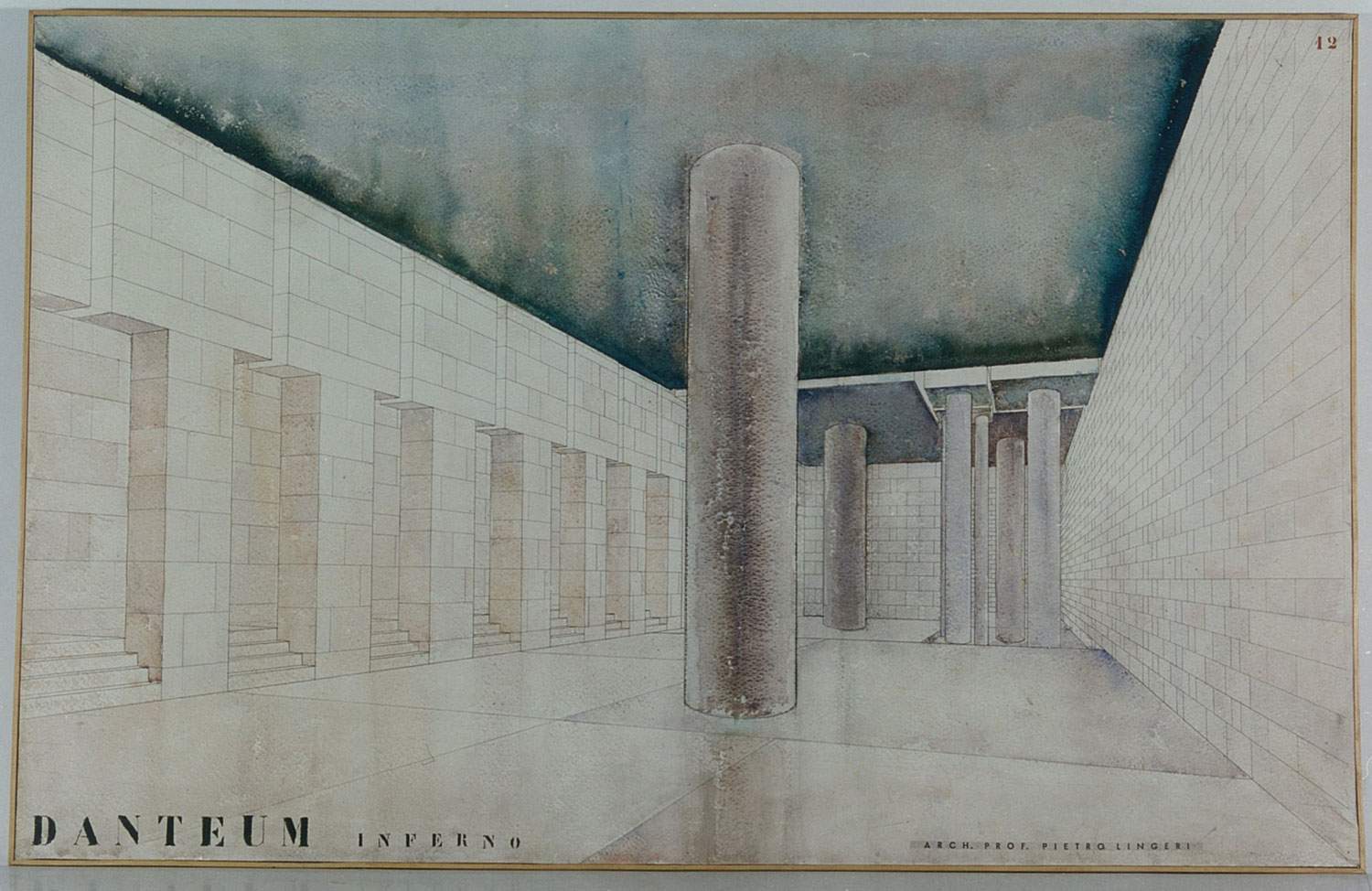Urbino, showcasing the Danteum, the building that was to pay homage to Dante in fascist Italy
The Galleria Nazionale delle Marche in Urbino also celebrates the seven hundredth anniversary of Dante Alighieri ’s death and does so with a special exhibition: entitled City of God. City of Men. Dante’s Architectures and Urban Utopias, curated by Luigi Gallo and Luca Molinari and scheduled from November 25, 2021 to March 27, 2022, the exhibition focuses on the influence Dante’s imagery had on the vision of artists, architects and illustrators.
In particular, the exhibition focuses on the project of rationalist architects Pietro Lingeri and Giuseppe Terragni, who in the late 1930s, on behalf of the Fascist regime, elaborated the image of the Danteum, a building, later never built, that was supposed to shape Dante’s imagery into an ideal architecture rich in symbolism. It was the first time architecture was called upon to give habitable form to Dante’s masterpiece, but the outbreak of World War II made the undertaking impossible.
The Danteum was to house a museum and library: it had been proposed to the Mussolini government by Rino Valdemeri, then president of the Italian Dante Society, in 1938. The plan was to finish the work in time for the 1942 World’s Fair in Rome: Valdemeri’s idea was to make the Danteum an eloquent symbol ofFascist Italy (the lawyer also prepared a Statute in which he proposed to erect “in this era, in which the will and genius of the Duce are realizing Dante’s imperial dream, a temple to the greatest poet of the Italians,” which was to “implement celebrations of Dante’s word, considered the primary source of Mussolini’s great creation,” house a library “complete with everything that may serve Dante scholars,” and “suggest and help all those initiatives that foment and attest to the imperial character of Fascist Italy.”) However, only the two authors and Benito Mussolini (who gave his consent after the project was presented to him in November 1938 at Palazzo Venezia) were able to see the plates all together. Now, for the first time, the whole project will be open to multiple eyes.
The work of Lingeri and Terragni, which in the exhibition is illustrated through the original materials, preserved at theLingeri Archive in Milan and never exhibited in their entirety, is placed in dialogue with the Ideal City, an iconic masterpiece of the Italian Renaissance and a key work in the collections of the Galleria Nazionale delle Marche. They include other works by contemporary Italian architects such as Aimaro Isola, Andrea Branzi and Franco Purini, who have reinterpreted the “section” of the Divine Comedy through a series of original drawings.
The exhibition thus aims to give space to a composite vision of Dante’s eschatology by comparing the works of contemporary Italian architects who have reread the “section” of the Divine Comedy through a series of original drawings, in dialogue with the two ideal visions of the Danteum and the Ideal City. The aim is thus to recompose the city of God, that is, the city of Dante’s thought, and the city of men, also through a clarification of the visual and conceptual relationship between thetraditional Dantean imagery and a current interpretation of it, which is used as a cue for a broader reflection aimed at looking at the complex and changing confrontation between narrative and image, filtered through powerful and original visions that reflect on the fragile nature of the contemporary world reread through Dante’s eyes.
For all information about the exhibition you can visit the website of the Galleria Nazionale delle Marche.
 |
| Urbino, showcasing the Danteum, the building that was to pay homage to Dante in fascist Italy |
Warning: the translation into English of the original Italian article was created using automatic tools. We undertake to review all articles, but we do not guarantee the total absence of inaccuracies in the translation due to the program. You can find the original by clicking on the ITA button. If you find any mistake,please contact us.




























